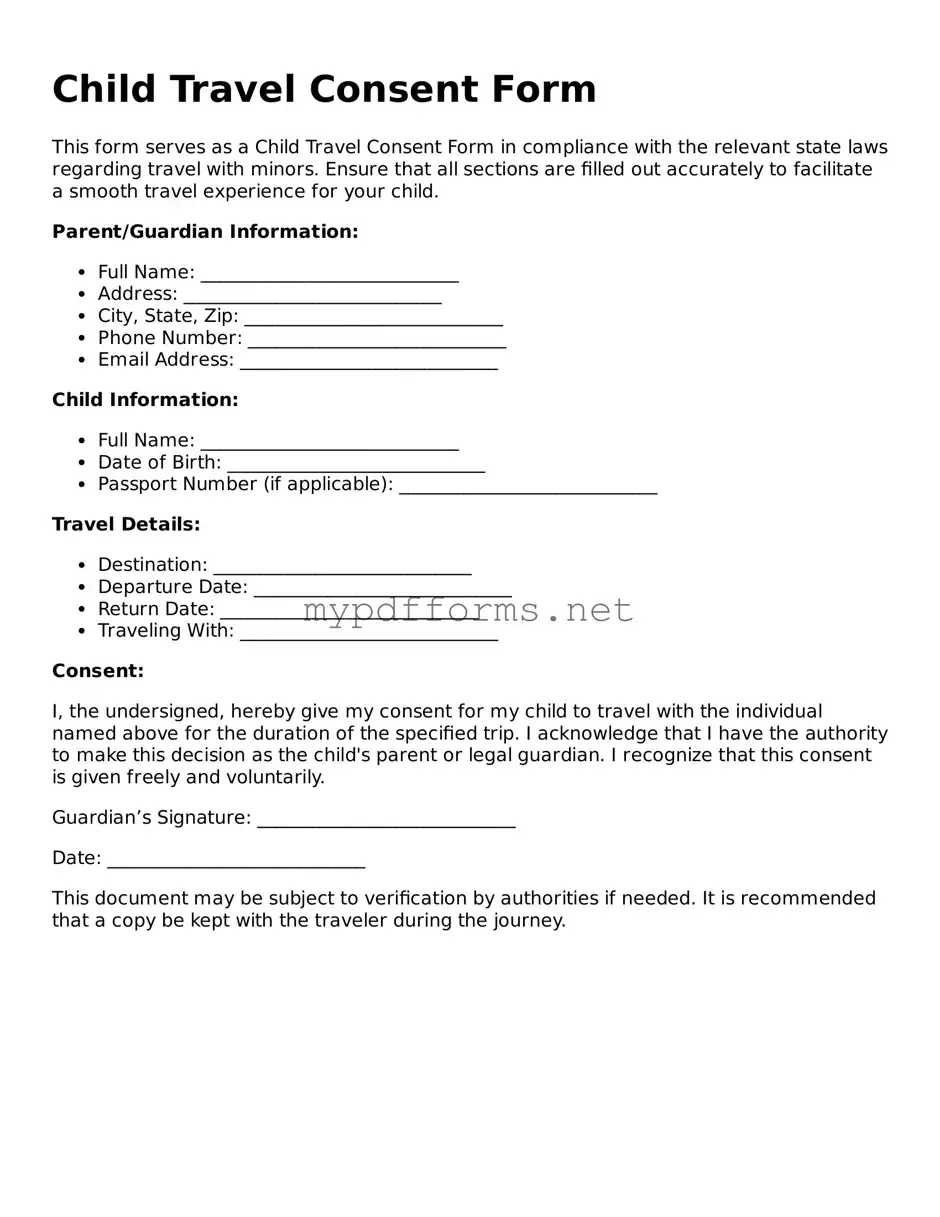The Child Travel Consent Form is similar to a Medical Consent Form. Both documents require a parent or guardian's permission for specific activities involving a minor. The Medical Consent Form grants healthcare providers the authority to treat a child in the absence of a parent. Just like the travel consent, it ensures that the child receives necessary care while also protecting the rights of the guardian and the service providers.
Another document that shares similarities is the Authorization for Release of Information. This form allows parents to give permission for others to access their child's personal information. In both cases, the parent or guardian must clearly state who is authorized and for what purpose. This ensures that the child’s privacy is maintained while allowing necessary communication between parties.
The Power of Attorney for Minor Children is also akin to the Child Travel Consent Form. This document allows a parent to designate another individual to make decisions on behalf of their child. Both forms require clear identification of the child and the adult responsible, ensuring that the designated person has the authority to act in the child's best interest during specific situations.
A School Field Trip Permission Slip shares a common purpose with the Child Travel Consent Form. Both documents require parental approval for a child to participate in an activity outside the home or school. The field trip slip typically outlines the details of the trip, while the travel consent focuses on permission for travel. Both forms aim to ensure the safety and well-being of the child while participating in activities away from their usual environment.
The Guardianship Consent Form is another similar document. It is used when a parent temporarily gives another adult the right to care for their child. Like the Child Travel Consent Form, it specifies the duration and scope of the authority granted, ensuring that the child’s needs are met while they are under someone else's care.
The Child Medical Release Form is closely related as well. This document allows a caregiver to seek medical treatment for a child when the parent is unavailable. Both forms require explicit consent from the parent or guardian, ensuring that the child can receive care in emergencies while also protecting the rights of the guardian.
Lastly, the Travel Insurance Waiver can be compared to the Child Travel Consent Form. While the travel consent focuses on permission for travel, the insurance waiver addresses the financial aspects of travel. Both documents require parental acknowledgment and consent, ensuring that the child is adequately protected during travel, whether legally or financially.
